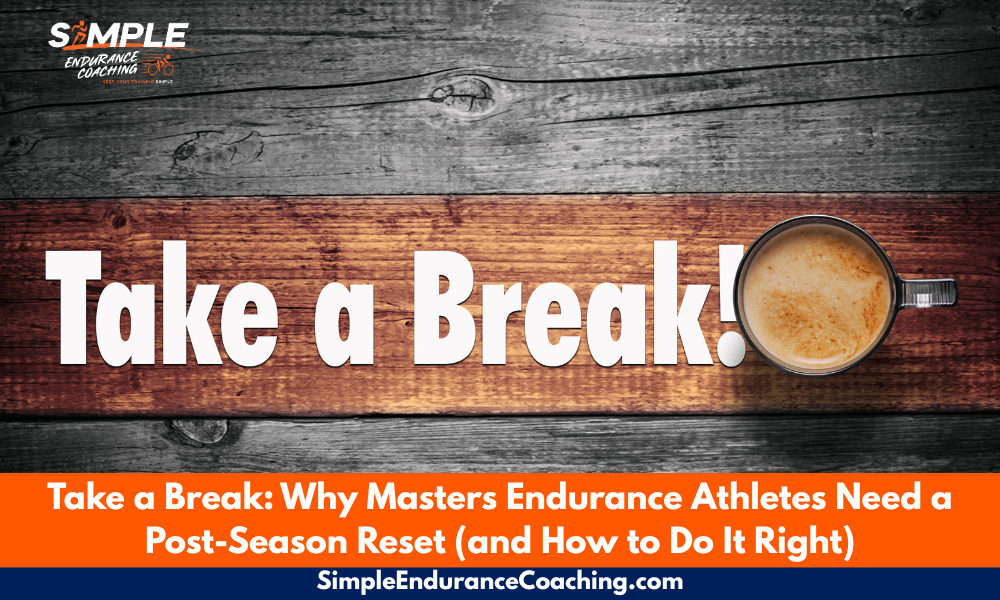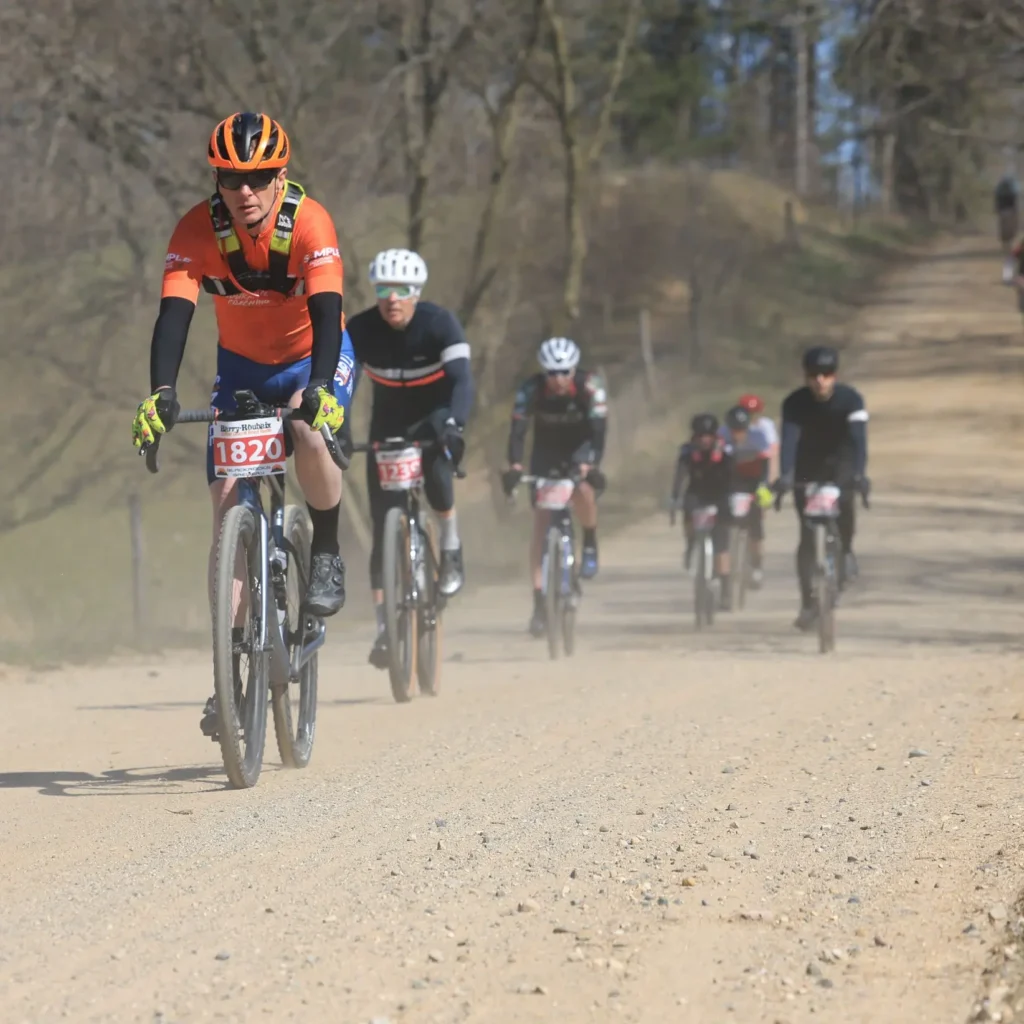I hated taking a break after a season.
In fact, I rarely took an off-season, maybe a weekend off racing.
But this year, I limped into the cross season after a long year of hard gravel racing.
So I actually took a two-week break this year from racing and structured training.
If you’re like many endurance athletes over 40, taking a post-season break feels uncomfortable.
You’ve worked hard to build fitness, and the thought of losing it — or the challenge of rebuilding it — can make rest seem risky.
But the research is clear: deliberate breaks are essential for long-term progress, health, and motivation.
Here’s what science says about post-season breaks, how long they should last, and how to make them work for you.
Why Take a Break?
Detraining happens fast — but that’s not a bad thing.
Studies show VO₂max can drop six to 10 percent within two to four weeks of complete rest.
Endurance performance and threshold decline even sooner, often within 10 to 14 days.
That sounds scary, until you realize most of that loss comes from reduced plasma volume and muscle enzyme activity, both of which rebound quickly once you resume training.
Masters athletes do lose fitness a little faster and rebuild a little slower, but that makes smart rest even more important.
Skipping a transition phase can lead to overuse injuries, chronic fatigue, or mental burnout that take months to recover from.
Even elite endurance athletes use a two-to-four-week transition phase after their key events to reset physically and mentally.
It’s not a sign of weakness; it’s part of a sustainable training cycle.
What the Research Says
- Cardiovascular fitness declines within two weeks of full rest.
VO₂max drops six to 10 percent, mostly due to reduced blood plasma volume and stroke volume.
- Mitochondrial enzymes and endurance capacity drop after two to four weeks, but most adaptations can be regained within a few weeks of retraining.
- Masters athletes experience a slower rebound because of lower anabolic hormone levels and slower mitochondrial development, but they can maintain more fitness with “active rest.”
- Skipping breaks increases the risk of overtraining and injury, and in lifelong high-volume athletes, continuous strain can contribute to cardiac remodeling that may improve with short detraining periods.
How Long Should the Break Be?
Most research and coaching frameworks suggest two to four weeks total, with seven to 10 days of true rest followed by active recovery.
- Shorter than two weeks, and you may not fully recover from the physical and psychological stress of racing.
- Longer than four to six weeks, and you’ll have to work much harder to regain endurance and strength.
For most masters athletes, that means about one week of complete rest, then two to three weeks of easy movement and fun cross-training.
What to Do During Your Post-Season Break
Here’s a practical week-by-week guide to transition effectively — without feeling like you’re losing everything you’ve built.
Week 1: Full Rest and Reset
- No structured training.
- Take walks, stretch, do gentle yoga, or ride casually if you feel like it — but don’t track it.
- Sleep more, eat well, and reconnect with family and friends.
- Reflect on your season: What worked? What needs to change?
This week restores your motivation and nervous system while allowing inflammation and micro-damage to heal.
Week 2: Active Recovery
- Reintroduce short, easy aerobic sessions (20 to 40 minutes, RPE 2–3).
- Keep most days light and unstructured with no intervals or tempo work yet.
- Add two light strength or mobility sessions to maintain muscle tone and joint health.
- Try a new activity like hiking, swimming, or mountain biking to refresh your mind and body.
Week 3: Re-Engage Gently
- Continue easy aerobic sessions (30 to 60 minutes).
- Add one short “neuromuscular touch” session, like four to six × 10-15-second strides or spin-ups to wake up coordination and fast-twitch fibers.
- Continue strength and yoga or mobility work twice a week.
- Start planning your next training block or season goals.
Week 4: Pre-Base Prep
- Increase training frequency slightly while keeping intensity mostly low.
- Add one light tempo or “moderate” effort session to test readiness.
- Make sure you’re sleeping well and feeling motivated before starting your next training cycle.
What Happens If You Don’t Take a Break?
You might maintain fitness for a few weeks, but the risks pile up:
- Injury and illness risk rise as fatigue accumulates and immune function dips.
- Performance stagnation creeps in from chronic, low-grade overtraining.
- Motivation drops, leading to “grind fatigue.”
- Heart health may suffer; short detraining phases help reverse cardiac strain from heavy, year-round endurance loads.
As Dr. Iñigo Mujika, who has studied detraining for decades, puts it:
“Rest is not the opposite of training — it’s the completion of training.”
Final Thoughts
As a master’s endurance athlete, it’s easy to fear that time off will undo my hard work.
But the evidence clearly says otherwise.
A smart, structured post-season break helps us absorb the season’s gains, prevent burnout, and prime my body for the next build.
Think of it not as stopping — but as sharpening the saw for what comes next.
Three Things to Know About Post-Season Breaks
1. Take two to four weeks off after your main season. Include about a week of full rest, then two or three weeks of gradual, active recovery.
2. Masters athletes should avoid total inactivity. Keep moving lightly with walks, gentle yoga, or casual rides while maintaining strength work. You lose fitness faster and rebuild slower, so active rest prevents the “detraining penalty” while still allowing recovery.
3. Skipping rest costs more later. Injuries, burnout, and cardiac fatigue all increase without a deliberate recovery phase. Even elite endurance athletes use two to four-week transition phases—it’s not weakness, it’s smart training.
Need more?
Unlock the secrets to mastering gravel racing with our FREE Guide to Gravel Racing! Get yours here.
BOOK A CALL so we can discuss your goals, answer questions, and talk about making your endurance training more effective, fun, and Simple.
Paul Warloski is a:
- USA Cycling Level 1 Advanced Certified Coach
- RRCA Running Coach
- Training Peaks Level 2 Coach
- RYT-200 Yoga Instructor
- Certified Personal Trainer
- Certified Nutrition Advisor




